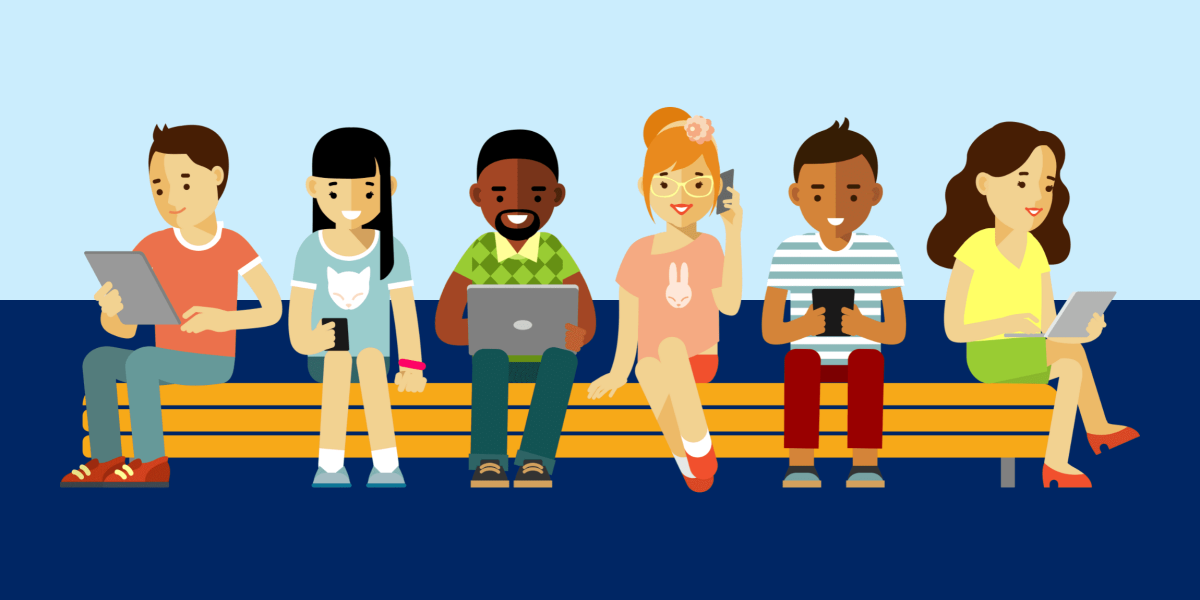
Traditionally, when we hear the term ‘digital accessibility,’ our minds often turn to people with disability. And rightfully so. For years, the focus has been on making digital content and technologies accessible to people with visual, auditory, motor, or cognitive disabilities. This emphasis has led to significant advancements in web design, software development, and assistive technologies, making it easier for people with disability to navigate and interact with digital products and services.
However, as technology continues to permeate every aspect of our lives, the importance of digital accessibility has expanded beyond its original scope. Consider this: the contrast adjustment that helps someone with low vision read digital content also assists people dealing with glare on their screens. It’s a simple yet powerful reminder that digital accessibility benefits everyone.
Embracing users with diverse abilities and needs
Each person is unique, with diverse abilities and needs that can take various forms – some visible, some hidden, and some situational. Recognising this diversity is important when building and buying digital products and services to ensure they are accessible to everyone, regardless of their situation.
Here are some common types of groups of people with diverse abilities and needs, along with their associated online barriers. It's important to note that these examples are not exhaustive, as each group may encompass a diverse range of experiences.
- Vision: This category includes people who have difficulty seeing, whether they are blind, have low vision, or experience colour blindness. They may use screen readers or other assistive technologies to access digital content. Common challenges for them include websites with poor contrast, small font sizes, or images lacking alternative text descriptions.
- Hearing: People who are deaf or hard of hearing fall into this category. They may face challenges accessing audio content without captions or transcripts and may require Auslan interpretation for online events, meetings, or videos.
- Learning and cognitive: People with cognitive or learning disabilities such as dyslexia, ADHD, or autism may have difficulty understanding complex language or instructions, focusing on cluttered interfaces, or navigating websites without clear guidance.
- Physical and motor: This category encompasses people with difficulties in mobility, coordination, or manipulating devices. People with motor impairments may find it challenging to navigate websites with small clickable elements or interfaces that require precise movements.
- Speech: This category includes people who experience speech-related conditions such as apraxia, dysarthria, stuttering, and similar conditions. They may encounter difficulties in articulating sounds, pronouncing words, or maintaining fluency in speech.
- Culturally and linguistically diverse (CALD): People from different cultural and linguistic backgrounds may face barriers when accessing digital content. Language barriers, cultural differences in design preferences, and varying levels of digital literacy can impact their experience with digital products and services.
- Ageing population: As people age, they may experience physical and cognitive changes that impact their ability to use digital technologies. Common challenges for the ageing population include declining vision and hearing, reduced motor skills, and cognitive decline affecting memory and problem-solving abilities.
- Situational: Temporary conditions or limitations, such as a broken arm, illness, or using a device in bright sunlight, can create barriers to accessing digital content. Other challenges include noisy environments where people may struggle to hear audio content or concentrate on tasks requiring focus, as well as traveling in areas with poor internet connectivity or using public Wi-Fi networks, which may lead to slow loading times or disruptions in accessing digital content.
Tips for improving digital accessibility for diverse users
To make sure your digital products and services are accessible to everyone, regardless of their abilities or circumstances, consider the following tips:
- Prioritise accessibility: Make accessibility a fundamental aspect of your design and development process from the outset. Incorporate accessibility standards and guidelines, such as the Web Content Accessibility Guidelines (WCAG), into your workflows.
- Conduct accessibility testing: Regularly test your digital products and services for accessibility using a variety of assistive technologies and devices. This helps identify and address potential barriers early in the development process.
- Provide multiple means of access: Offer alternative ways for users to access content, such as providing text alternatives for images, captions for videos, and transcripts for audio content. This ensures that people with diverse abilities and needs can access and understand the information presented.
- Design inclusively: Create flexible and adaptable interfaces, incorporating inclusive design principles that accommodate different user needs and preferences. Allow users to customise settings, such as text size, color contrast, and keyboard shortcuts, to suit their individual requirements.
- Ensure keyboard accessibility: Ensure that every interactive feature is fully accessible via keyboard input alone, as some users may depend solely on keyboard navigation rather than using a mouse or touchpad.
- Educate and train teams: Educate your team members about the importance of accessibility and provide training on how to design, develop, and test accessible digital products and services effectively. The Fundamentals of Digital Accessibility course is a great start, along with other tailored courses available on the courses page of the Accessibility and Inclusivity toolkit.
- Engage with diverse user groups: Good design starts with diverse voices. Involve people with diverse abilities and needs in the design and testing process to gain insights into their needs and experiences. This user-centered approach helps ensure that your digital products and services meet the needs of all users.
- Monitor and improve accessibility: Continuously monitor and evaluate the accessibility of your digital products and services and address any accessibility issues or feedback from users promptly. Regularly updating and improving accessibility features demonstrates your commitment to inclusivity.
If you experience challenges accessing NSW Government websites or applications, including documents, videos, and audio files, it is important to report the issue. Your feedback is important in identifying and rectifying accessibility problems. Visit the Accessibility and Inclusivity Toolkit to learn more about making your work accessible.